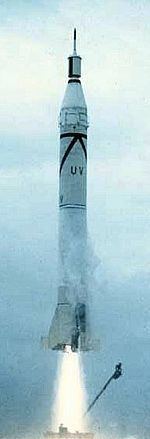Mission duration Launch failure Launch mass 14.52 kg Rocket Juno I Mission type Earth science | Launch site Cape Canaveral LC-26A Launch date 5 March 1958 Manufacturer Jet Propulsion Laboratory | |
 | ||
Operator Army Ballistic Missile Agency Similar Explorer 3, Explorer 1, Explorer 4, Explorer 6, Explorer 8 | ||
Iran launches kavoshgar 2 explorer 2
Explorer 2 was to be a repeat of the Explorer 1 mission. However, due to a failure in the rocket during launch, the spacecraft did not reach orbit.
Contents
Explorer 2 was launched from Cape Canaveral Air Force Station LC-26A in Florida on March 5, 1958 at 18:28 UTC, by a Juno-I launch vehicle. The Juno-I had its origins in the United States Army's Project Orbiter in 1954. The project was canceled in 1955, when the decision was made to proceed with Project Vanguard.
Following the launch of the Soviet Sputnik 1 on October 4, 1957, the Army Ballistic Missile Agency (ABMA) was directed to proceed with the launching of a satellite using the Juno-I four-stage variant of the three-stage Jupiter-C, which had already been flight-tested in nose-cone re-entry tests for the Jupiter IRBM (intermediate-range ballistic missile). Working closely together, ABMA and Jet Propulsion Laboratory (JPL) completed the job of modifying the Jupiter-C and building Explorer 1 in 84 days.
Spacecraft design
Explorer 2 was equipped with a Geiger counter for the purposes of detecting cosmic rays. After Explorer 3, it was decided that the original Geiger counter had been overwhelmed by strong radiation coming from a belt of charged particles trapped in space by the Earth's magnetic field (see: Van Allen radiation belt). Explorer 2 was also equipped with a wire grid array and an acoustic detector for the purpose of micrometeorite detection.
Mission results
Explorer 2 failed to reach orbit after a malfunction in the Juno-I launch vehicle caused the fourth stage to not ignite.
